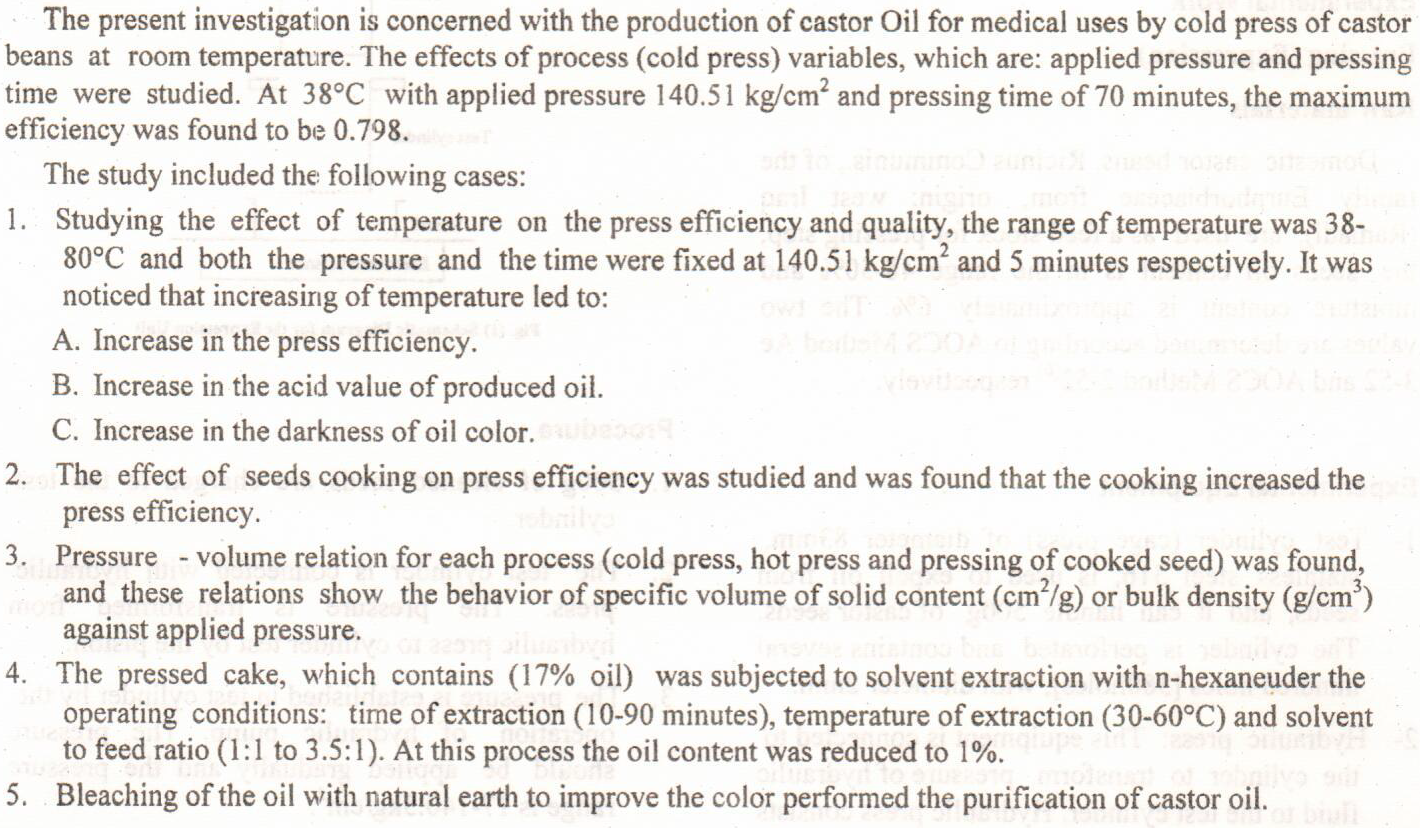
This research investigates the methods of producing Investigative Arabic Television Programs that are able to prove its existence during a short period of time as a form of Television programs on Arab satellite channels growing in number and varied in content. The research aims to present qualitative and quantitative descriptions of the methods used in tackling the topics discussed in the program, and knowing whether they satisfy the conditions and scientific foundations for the research, investigation, analysis, and interpretation. The researcher uses the survey method and uses the tool of content analysis including a set of methodological steps that seek to discover the implied meaning of the research sample represented by the program
... Show More (7)
(7)
In this research, production of ethanol from waste potatoes fermentation was studied using Saccharmyses cerevisiae. Potato Flour was prepared from potato tubers after cooking and drying at 85°C. Homogenous slurry of potato flour was prepared in water at solid liquid ratio 1:10. Liquefaction of potato flour slurry with α-amylase at 80°C for 40 min followed by saccharification with glucoamylase at 65°C for 2 hr .Fermentation of hydrolysate with Saccharomyces cerevisiae at 35°C for two days resulted in production of 33 g/l ethanol.
The parameters studied were; temperature, time of fermentation and pH. It was found that Saccharification process is affected by enzyme Amylo 300 conc
... Show MoreBuilding a geological model is an essential and primary step for studying the reservoir’s hydrocarbon content and future performance. A three-dimensional geological model of the Asmari reservoir in Abu- Ghirab oil field including structure, stratigraphy, and reservoir petrophysical properties, has been constructed in the present work. As to underlying Formations, striking slip faults developed at the flank and interlayer normal. Abu Ghirab oilfields are located on the eastern anticlinal band, which has steadily plunged southward. 3D seismic interpretation results are utilized to build the fault model for 43 faults of the Asmari Formation in Abu Ghirab Oilfield. A geographic facies model with six different rock facies types
... Show More (2)
(2)
In many industries especially oil companies in Iraq consumed large quantities of water which will produce oil-contaminated water which can cause major pollution in agricultural lands and rivers. The aim of the present work is to enhance the efficiency of dispersed air flotation technique by using highly effective and cost-efficient coagulant to treating gas oil emulsion. The experimental work was carried out using bubble column made of Perspex glass (5cm I.D, 120cm height). A liquid was at depth of 60cm. Different dosage of sawdust +bentonite at ratio 2:1 (0.5+ 0.25; 1+ 0.5 and 2+1) gm and alum at concentration (10,20and30mg/l) at different pH ( 4 and 7) were used to determine optimum dosages of coagulant. Jar test exper
... Show MoreThis research is devoted to design and implement a Supervisory Control and Data Acquisition system (SCADA) for monitoring and controlling the corrosion of a carbon steel pipe buried in soil. A smart technique equipped with a microcontroller, a collection of sensors and a communication system was applied to monitor and control the operation of an ICCP process for a carbon steel pipe. The integration of the built hardware, LabVIEW graphical programming and PC interface produces an effective SCADA system for two types of control namely: a Proportional Integral Derivative (PID) that supports a closed loop, and a traditional open loop control. Through this work, under environmental temperature of 30°C, an evaluation and comparison were done for
... Show More (5)
(5)


